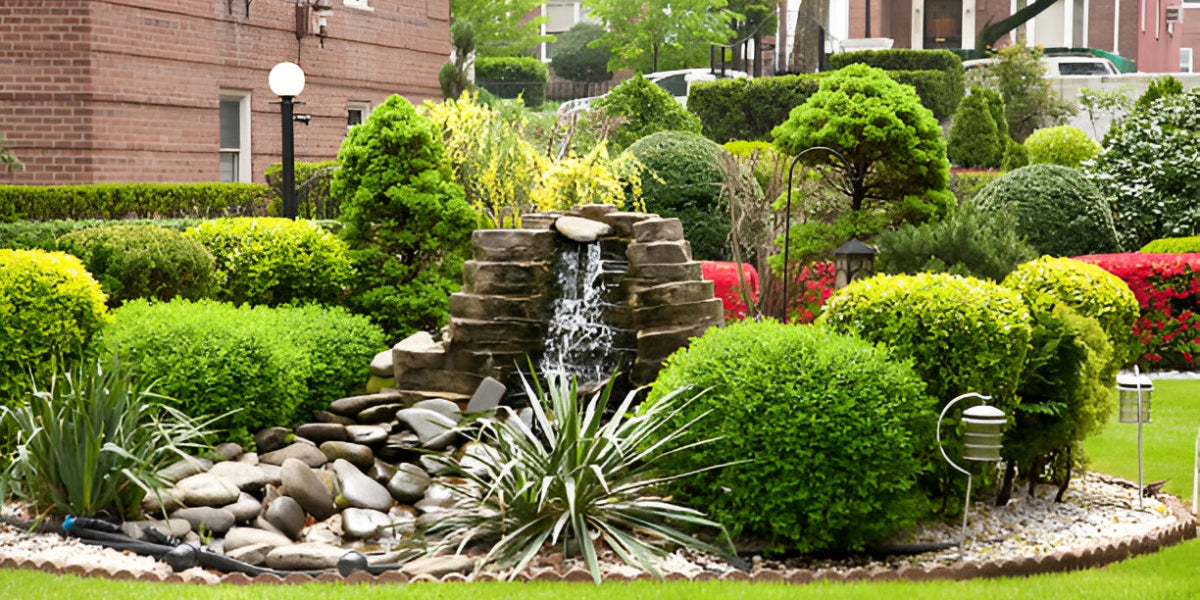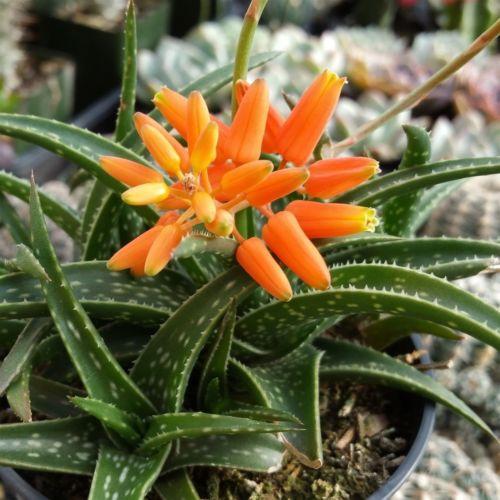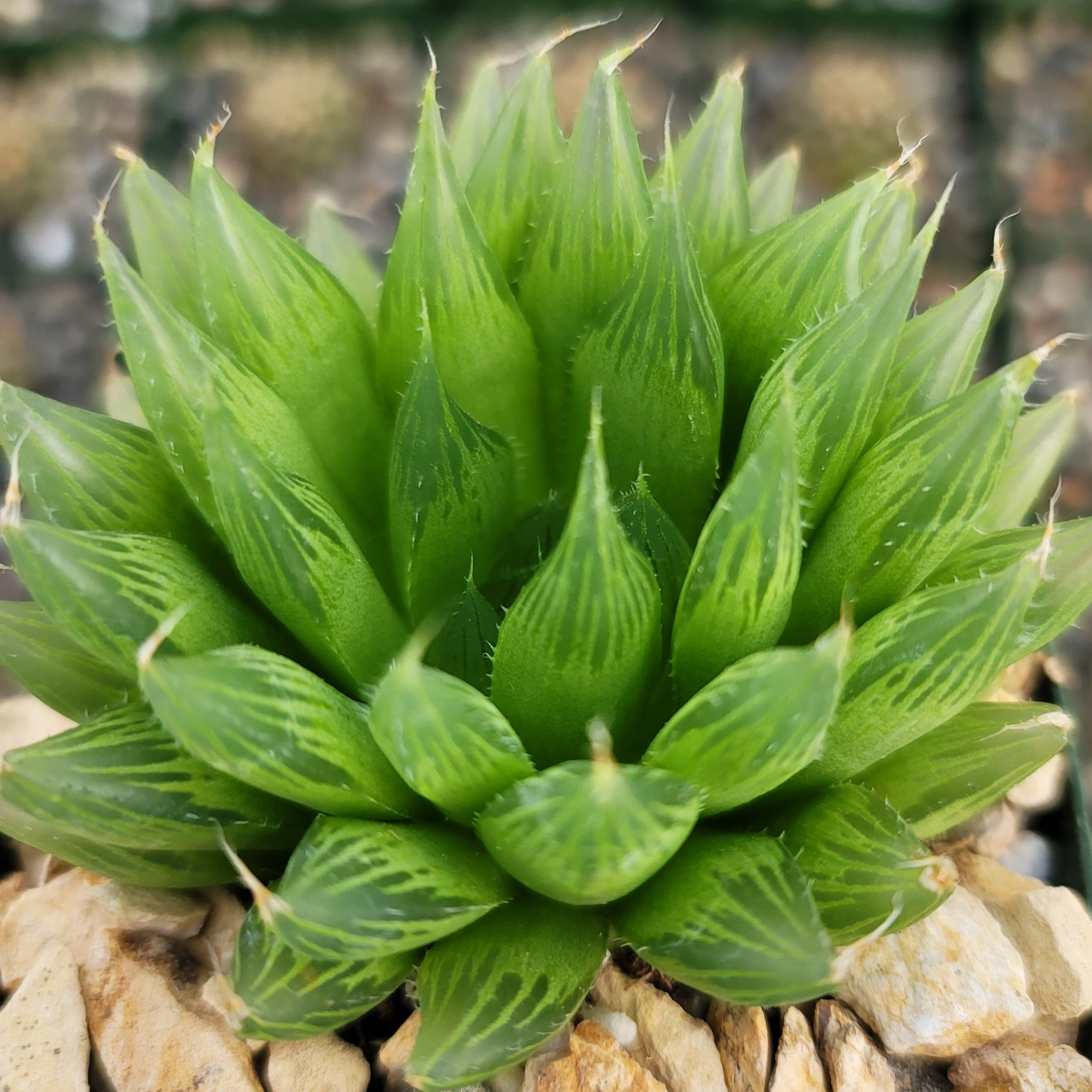Monocarpic Succulents
Updated: January 28, 2025

Who would not feel proud of their large colorful plants? Be it flowering succulents for pots or outdoor settings, it is a joy to witness them blooming. A cactus with a pink top or tall red succulents add pride to your garden. However, some of the flowering succulents die right after the plant flowers. Often, it is because of over-watering or slow-draining soil, but more often than not, it is because the plant is Monocarpic. Be it a seasoned gardener or an amateur, Monocarpic succulents can leave any cactus-lover discouraged and heartbroken. Your favorite liveforever has started to turn black within days of blooming. It is natural to wonder if your plant is an unhealthy Hen and chick plant. All the fun of watching the blooms on plants in the flower bed in your succulent garden nose-dives when you just standby watching it burn out. In this blog post, we share a complete guide on Monocarpic succulents and reasons why they die right after blooming, with answers to some frequently asked questions!

What is a Monocarpic Succulent?
Mono means single, and caprice means flowering or fruit. Monocarpic plant flowers only once, which is why these are also called Death bloom succulent. Coincidentally, many from the cacti family are Monocarpic. One of the characteristic features of this variety is that the plant will die on its own after flowering. It is a natural process for the flowering succulent plant, and there is nothing much that a plant owner can do about it. Not all blooming succulent plants wither away after flowering. Monocarpic is not, however, exclusive to succulent species. Many plants from different families die after a single flowering. The parent plant dies while seeds or offsets contribute to propagation.
Following is the Monocarpic succulent plants’ name list
There are many types of Monocarpic succulents. These are:
- Agave - Not all species in the Agave death bloom are Monocarpic.
- Kalanchoe - Not all species in this family are Monocarpic. Examples include Paddle Plant and Flapjacks
- Aeoniums - Not all species in this family are Monocarpic.
- Sempervivum - All species in this family are Monocarpic. It means that once the Sempervivum flower appears, your favorite plant is going to sink up fast.
Chinese Dunce Caps from the Orostachys family, Peperomia, and Sinocrassula are a few other Monocarpic succulent plants.

Reasons why do Monocarpic succulents die just after blooming?
These plants cannot sustain for long after sprouting flowers because there is no energy left in them. Even if planted in the best of soil and watered well, they have no nutrients left to survive any further. Most of the plants start blackening up and die before long. But the good news is that most of these succulents take time to flower. They will be there with you for quite some time before blooming. The duration varies, however, from family to family. For example, Agave has a lifespan of 25 years, while plants like Century Plants take even more to bloom. On the other hand, Hens and chicks’ death bloom in about three to four years.
Common succulent bloom of death
1. Agave blooming succulents
These plants are large-leaved succulents with spiny ends. There is variety, but most plants grow up to 8 or 10 feet tall. The Agave foliage color ranges from bluish-green to greyish-green. The slow-growing succulent takes decades to mature. A tall bell-shaped green or yellow flower comes out of the center of the plant, and then it dies. Interestingly, it takes a few months for the plant to die.
2. Kalanchoe succulent death bloom
These succulents have typical thick leaves. Their sculpted foliage makes it an interesting potted indoor flowering succulent. However, not all from this family are Monocarpic. Plants with overlapping leaves are Monocarpic.
3. Aeoniums
This succulent has a cute plant name ‘Tree houseleeks.’ It belongs to fuzzy succulent species. The plant appears in rosettes, with each bearing a central inflorescence. It dies after the bloom, but the plant produces innumerable offsets that thrive after its death. Noteworthy thing is that not all Aeoniums die after flowering. For example, the Aeonium arboreum is a type of tall succulent plant, a member of the family is non-monocarpic.
4. Sedum sempervivum tectorum
The succulent has cute plant names ‘Liveforever’, ‘Hen and chicks’, ‘Oddity succulent’, and ‘Jupiter beard.’ These plants exhibit rapid growth. But Hen and chick plants dying is very common immediately after the plant flowers. And the foliage dies soon after blooming. The good news is that new rosettes appear soon after. Take your mouse over Sempervivum flowers images, and you will understand why this succulent with pink flowers is a death bloom.

What about flowering Echeveria? Is it Monocarpic too?
Echeveria is a tall succulent with red tips and pink flowers. In general, Echeveria burgundy pearl is not Monocarpic. This trailing cactus indeed looks gorgeous. The pink flower stalk in this species appears from within the layers of the leaves. And, thankfully, the mother plant will survive happily afterward. You may notice some shabby leaves, but that is not a problem. It happens because the parent plant needed energy for the flower stalks. Once the Echeveria bloom is removed, the succulent returns to its pre-bloom period. Some varieties of Echeveria will have a terminal flower stalk from the core. In this case, the plant will die after blooming. Examples of Echeveria death bloom are Echeveria Afterglow and E. Blue Sky.
How can I identify if a particular succulent is death bloom variety or not?
Looking at the flower helps identify that the plant is Monocarpic. Only in Death blooms succulents; the flower grows right from the center of the foliage. The appearance is as if the entire plant is surrounding the single flower. Look at the plant carefully. If the bloom appears from the side of the succulent, it is not Monocarpic. In such plants, the first indications start to come when the succulent grows tall, and the lower leaves start to appear shabby and fuzzy.
FAQs
1. Do succulents bloom?
Yes, succulents bloom. Some flower in spring and summer, while some bloom during winter. They need to be provided with the right conditions - lots of light, dry climate, and most importantly, balanced watering.
2. How often do succulents bloom?
Cacti usually bloom once a year, and they start to flower when they are four years of age. Some species could flower even earlier than four years of age.
3. How to save a dying Hen and chick?
It is natural for Hens and chicks with webbing to die after bearing a flower. The correct way to save the plant is by cutting the chicks or the offsets. And then, replant the chicks for propagation.
4. Can Monocarpic succulents be saved or prevented from dying?
Not enough data is there to understand if it is possible to prevent Monocarpic succulents from dying. One way to delay their dying is to postpone their flowering. It can be done by taking care of the succulent. Ensuring enough sunlight to the plant and watering regularly can bear good results.
5. How to get a succulent flower?
First things first - succulents can take time to flower. Some cacti can take up to 30 years to bloom. In some plants, owners can fasten the flowering process. Succulents need adequate sunlight as it is the most crucial requirement. If you have a houseplant, put it out in the sun for half a day.
6. Are Echeveria monocarpic? Do Echeverias die after flowering?
No, generically, Echeveria is not Monocarpic except for a few species like Echeveria Afterglow and E. Blue Sky. All others, like Mexican Peacock that is an Echeveria with orange flowers, or Runyonii Echeveria are not Monocarpic.
7. Do Haworthias die after blooming?
Haworthia is not a Monocarpic succulent. It is a succulent sprouting flower. While the parent plant is small, it is a succulent growing long stem with blooms.
8. Which is a flower-shaped succulent? Is it Monocarpic too?
The Greenovia dodrantalis or the Mountain rose is a rose succulent. The rosettes consist of densely-packed leaves. No, this species is not Monocarpic.
9. Echeveria vs Sempervivum.
The Sempervivum bloom emerges from the center. The Echeveria flower stalk arises from leaves, on the peripheral. Thus, Echeveria flowering succulents are non-monocarpic while Sempervivum, the prettiest flowering succulent dies after a single flower blooms. Coincidentally, both Echeveria and Sempervivum are pink blooming succulents.
10. Which is the biggest succulent? Is it Monocarpic?
It is African baobab or Adansonia digitata. A flowering plant, it is not Monocarpic. The flowers stink and open at night.
11. Do orange-colored succulents exist?
The green or bluish-green leaves of succulents start turning orange, yellow, or red due to overheating or cold.
12. Do succulents flower? If yes, why do they flower?
Yes, most succulents flower. Most of them bloom to attract pollinating insects just like other plants, herbs, and shrubs.
13. How to grow succulent flowers?
If you are keen that your flowering indoor succulents bloom well, you need to adjust the sunlight they receive. The same is the case with outdoor flowering succulent plants. The sunlight activates certain chemicals in the plants that support flowering.
Succulents bloom beautifully if given proper care. They do well when planted in the appropriate soil and given the right watering as well as lighting conditions. If you are a gardening enthusiast, you can expand your plant collection by growing colorful flowering plants. Although Monocarpic succulents are also a good choice, they will stay with you for only some time.
























